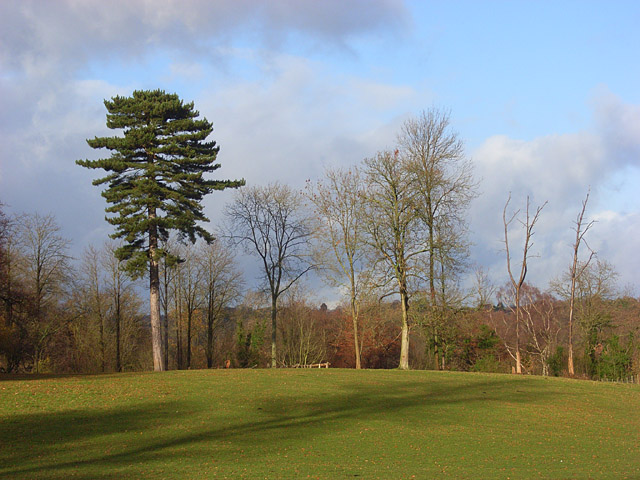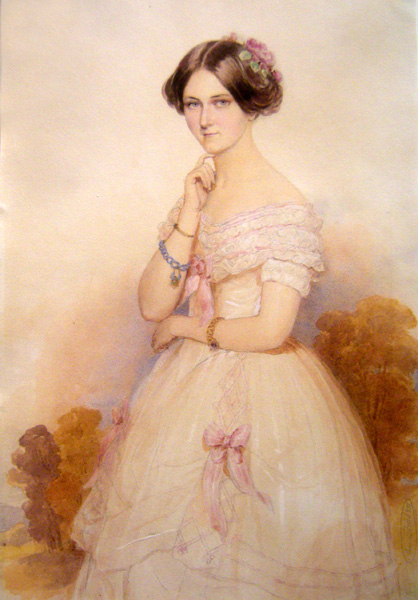|
Badgemore
Badgemore is the site of an ancient manor situated West of Henley-on-Thames in Oxfordshire. History William the Conqueror gave Henry de Ferrers a considerable number of manors including Badgemore in Oxfordshire. In the early 19th century the house passed to a Mr Charles Lane and later that century it was acquired by a Mr Richard Ovey, who was High Sheriff of Oxfordshire The High Sheriff of Oxfordshire, in common with other counties, was originally the King's representative on taxation upholding the law in Saxon times. The word Sheriff evolved from 'shire-reeve'. The title of High Sheriff is therefore much older .... In 1884 Ovey commissioned John Norton to re-model and enlarge the house. Ovey leased Badgemore to Admiral of the Fleet the Earl of Clanwilliam who received a visit from Carola, Queen of Saxony there in April 1905. Clanwilliam died at Badgemore in August 1907. The house is now a serviced office facility within the grounds of a golf club. References Sources * ... [...More Info...] [...Related Items...] OR: [Wikipedia] [Google] [Baidu] |
Richard Meade, 4th Earl Of Clanwilliam
Admiral of the Fleet Richard James Meade, 4th Earl of Clanwilliam (3 October 1832 – 4 August 1907), styled Lord Gillford until 1879, was a Royal Navy officer. As a junior officer, he served at the Battle of Escape Creek and at the Battle of Fatshan Creek during the campaign against Chinese pirates. He also took part in the Battle of Canton, where he was severely wounded, during the Second Opium War. As a senior officer Meade went on to be commander of the Steamship reserve at Portsmouth, commander of the Flying Squadron and Commander-in-Chief, North America and West Indies Station. His last appointment was as Commander-in-Chief, Portsmouth. Early career Born the eldest son of Richard Meade, 3rd Earl of Clanwilliam and Elizabeth Meade (daughter of George Herbert, 11th Earl of Pembroke), Meade was educated at Eton College and joined the Royal Navy in November 1845. Promoted to lieutenant on 15 September 1852, Meade was appointed to the frigate HMS ''Impérieuse'' in whic ... [...More Info...] [...Related Items...] OR: [Wikipedia] [Google] [Baidu] |
John Norton (architect)
John Norton (28 September 1823 – 10 November 1904) was an English architect who designed country houses, churches and a number of commercial buildings. Early life Norton was born and educated in Bristol. He became the pupil of architect Benjamin Ferrey (1810–80) in 1846. Ferrey was an early member of the Royal Institute of British Architects and a close friend of the designer Augustus Pugin (1812–52), who took his inspiration from the Gothic medieval styles of the pre-Reformation era. Ferrey's association with Pugin had a profound effect upon Norton, who adopted Pugin's principles and Christian moral dimensions in his own subsequent designs for church architecture. The vital tenets of Pugin's and thus Norton's creed were centred on the revival of the pointed structure of the Gothic arch. It was argued that only this construction truly symbolised Christian striving towards heaven and Christ's resurrection, Classical architecture having been based on pagan temples. Further ... [...More Info...] [...Related Items...] OR: [Wikipedia] [Google] [Baidu] |
High Sheriff Of Oxfordshire
The High Sheriff of Oxfordshire, in common with other counties, was originally the King's representative on taxation upholding the law in Saxon times. The word Sheriff evolved from 'shire-reeve'. The title of High Sheriff is therefore much older than the other crown appointment, the Lord Lieutenant of Oxfordshire, which came about after 1545. Between 1248 and 1566 Berkshire and Oxfordshire formed a joint shrievalty (apart from a brief period in 1258/9). See High Sheriff of Berkshire. List of High Sheriffs of Oxfordshire *1066–1068: Saewold *1066–1086: Edwin *1071: Robert D'Oyly 12th century *c. 1130: Restold *c. 1142–?: William de Chesney *1135–1154: Henry de Oxford *1155–1159: Henry D'Oyly, 4th Baron Hocknorton *1160: Manasser Arsick and Henry D'Oyly, 4th Baron Hocknorton *1161–1162: Manasser Arsick *1163: Thomas Basset *1164–1169: Adam de Catmore *1170–1174: Alard Banastre *1175–1178: Robert de Tureville *1179–1181: (first half): Geoffrey Hose *1181: (s ... [...More Info...] [...Related Items...] OR: [Wikipedia] [Google] [Baidu] |
Henley-on-Thames
Henley-on-Thames ( ) is a town and civil parish on the River Thames in Oxfordshire, England, northeast of Reading, west of Maidenhead, southeast of Oxford and west of London (by road), near the tripoint of Oxfordshire, Berkshire and Buckinghamshire. The population at the 2011 Census was 11,619. History Henley does not appear in Domesday Book of 1086; often it is mistaken for ''Henlei'' in the book which is in Surrey. There is archaeological evidence of people residing in Henley since the second century as part of the Romano-British period. The first record of Henley as a substantial settlement is from 1179, when it is recorded that King Henry II "had bought land for the making of buildings". King John granted the manor of Benson and the town and manor of Henley to Robert Harcourt in 1199. A church at Henley is first mentioned in 1204. In 1205 the town received a tax for street paving, and in 1234 the bridge is first mentioned. In 1278 Henley is described as a hamlet of ... [...More Info...] [...Related Items...] OR: [Wikipedia] [Google] [Baidu] |
Oxfordshire
Oxfordshire is a ceremonial and non-metropolitan county in the north west of South East England. It is a mainly rural county, with its largest settlement being the city of Oxford. The county is a centre of research and development, primarily due to the work of the University of Oxford and several notable science parks. These include the Harwell Science and Innovation Campus and Milton Park, both situated around the towns of Didcot and Abingdon-on-Thames. It is a landlocked county, bordered by six counties: Berkshire to the south, Buckinghamshire to the east, Wiltshire to the south west, Gloucestershire to the west, Warwickshire to the north west, and Northamptonshire to the north east. Oxfordshire is locally governed by Oxfordshire County Council, together with local councils of its five non-metropolitan districts: City of Oxford, Cherwell, South Oxfordshire, Vale of White Horse, and West Oxfordshire. Present-day Oxfordshire spanning the area south of the Thames was h ... [...More Info...] [...Related Items...] OR: [Wikipedia] [Google] [Baidu] |
William The Conqueror
William I; ang, WillelmI (Bates ''William the Conqueror'' p. 33– 9 September 1087), usually known as William the Conqueror and sometimes William the Bastard, was the first House of Normandy, Norman List of English monarchs#House of Normandy, king of England, reigning from 1066 until his death in 1087. A descendant of Rollo, he was Duke of Normandy from 1035 onward. By 1060, following a long struggle to establish his throne, his hold on Normandy was secure. In 1066, following the death of Edward the Confessor, William invaded England, leading an army of Normans to victory over the Anglo-Saxons, Anglo-Saxon forces of Harold Godwinson at the Battle of Hastings, and suppressed subsequent English revolts in what has become known as the Norman Conquest. The rest of his life was marked by struggles to consolidate his hold over England and his continental lands, and by difficulties with his eldest son, Robert Curthose. William was the son of the unmarried Duke Robert I of Normandy ... [...More Info...] [...Related Items...] OR: [Wikipedia] [Google] [Baidu] |
Henry De Ferrers
Henry de Ferrers (died by 1100), magnate and administrator, was a Norman who after the 1066 Norman conquest was awarded extensive lands in England. Origins He was the eldest son of Vauquelin de Ferrers and in about 1040 inherited his father's lands centred on the village of Ferrières-Saint-Hilaire. Career In England he progressively acquired landholdings, which he had to manage. As one of the leading magnates, he also served King William I of England and his successor William II in administrative capacities and is said to have been castellan of Stafford Castle. In about 1080, he and his wife founded Tutbury Priory in Staffordshire, and in 1086 he was one of the royal commissioners in charge of the Domesday survey, which records his 210 manors.''Domesday Book: A Complete Translation''. London: Penguin, 2003. p. 656-7 744-9 He died between September 1093 and September 1100 and was buried in Tutbury Priory. Landholdings His first three tranches of land came to him from dispo ... [...More Info...] [...Related Items...] OR: [Wikipedia] [Google] [Baidu] |
Carola Of Vasa
Carola of Vasa-Holstein-Gottorp (''Caroline Friederike Franziska Stephanie Amalie Cäcilie''; 5 August 1833 – 15 December 1907), was by birth a titular Princess of Sweden and styled ''Princess of Vasa'' as member of the House of Holstein-Gottorp, and by marriage the last Queen consort of Saxony. At the side of her husband, Carola dedicated herself to the charitable development of new social institutions in the Kingdom of Saxony. With the founding of the Albert Association (German: ''Albertverein'') in 1867 and other nursing and training institutions, she set impulses in the areas of charity, poor and sick care as well as the care of the wounded. In addition, she was involved in aid, children's and women's associations for the support of the disadvantaged. She was a recipient of the Order of Sidonia and gave her name to the Carola Medal for charity, which was named after her. Numerous places are named after her, especially in Dresden. Princess of Vasa 1833–1853 Childho ... [...More Info...] [...Related Items...] OR: [Wikipedia] [Google] [Baidu] |





